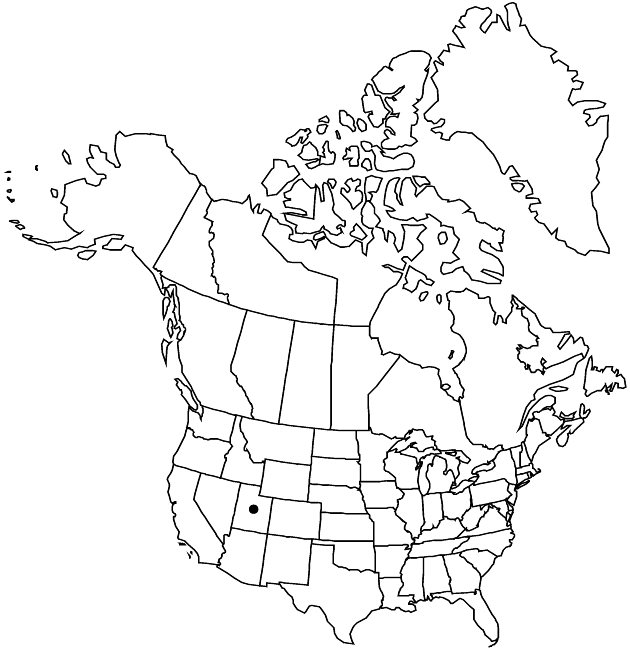Herrickia kingii
Sida 21: 898. 2004.
Perennials, densely cespitose, dwarf, 1–12 cm; caudices woody, branched, from stout taproots. Stems 1–5+, loosely erect, densely long-stipitate-glandular. Leaves mostly basal and cauline, basal and proximal cauline tufted, often marcescent; petiolate to sessile (distal), petioles 10–32 mm, bases sheathing; blades oblanceolate to spatulate, 10–80 (–120) × 15 (–20) mm, progressively reduced distally, thick, firm, bases ± attenuate, margins entire or irregularly serrate, eciliate, teeth apiculate to ± spinulose, apices obtuse to acute, mucronate-indurate or callous, faces glabrous. Heads 1–5, borne singly or in ± corymbiform arrays. Peduncles stipitate-glandular [bracts not observed]. Involucres hemispheric-campanulate, 8–12 mm. Phyllaries in 4–5 series, often partly purplish (especially inner), ± keeled, lanceolate to linear-lanceolate, margins narrowly scarious, erose, sometimes stipitate-glandular (particularly on green parts), green zones 1/2–2/3 distal portions and full width (outer) to less than 1/6 and along midveins (inner), apices acute to long-acuminate, squarrose (outer and mid) to appressed (inner), faces glabrous, stipitate-glandular (green parts). Ray-florets 13–27; corollas white to lavender, 8–17 (–20) × 1.7–2.2 (–3) mm. Disc-florets 29–47; corollas pale-yellow, 5.5– (6–8) mm, barely ampliate, tubes 2.6–2.9 mm, slightly longer than funnelform throats 1.9–2.3 mm, lobes erect to spreading, lanceolate, 0.8–1 mm. Cypselae brown, fusiform, slightly compressed, 2.5–3.5 mm, 8–10-nerved, faces ± densely strigillose; pappi of yellowish bristles ca. 6 mm.
Discussion
Varieties 2 (2 in the flora).
Herrickia kingii is known only from the Wasatch and Canyon mountains. The generic assignment of this species has been debated (e.g., A. Cronquist and D. D. Keck 1957; G. L. Nesom 1991e; Cronquist 1994). S. L. Welsh et al. (1987) underlined similarities with “Aster” alpigenus (= Oreostemma alpigena), among others. A recent molecular phylogenetic analysis (L. Brouillet et al. 2004) showed that H. kingii belongs to the Eurybia complex, possibly as a basal member of Herrickia.
Selected References
None.
Key
| 1 | Leaves entire | Herrickia kingii var. kingii |
| 1 | Leaves (at least some basal and proximal) irregularly serrate | Herrickia kingii var. barnebyana |
"thick" is not a number."full" is not a number."[" is not declared as a valid unit of measurement for this property."]" is not declared as a valid unit of measurement for this property.
